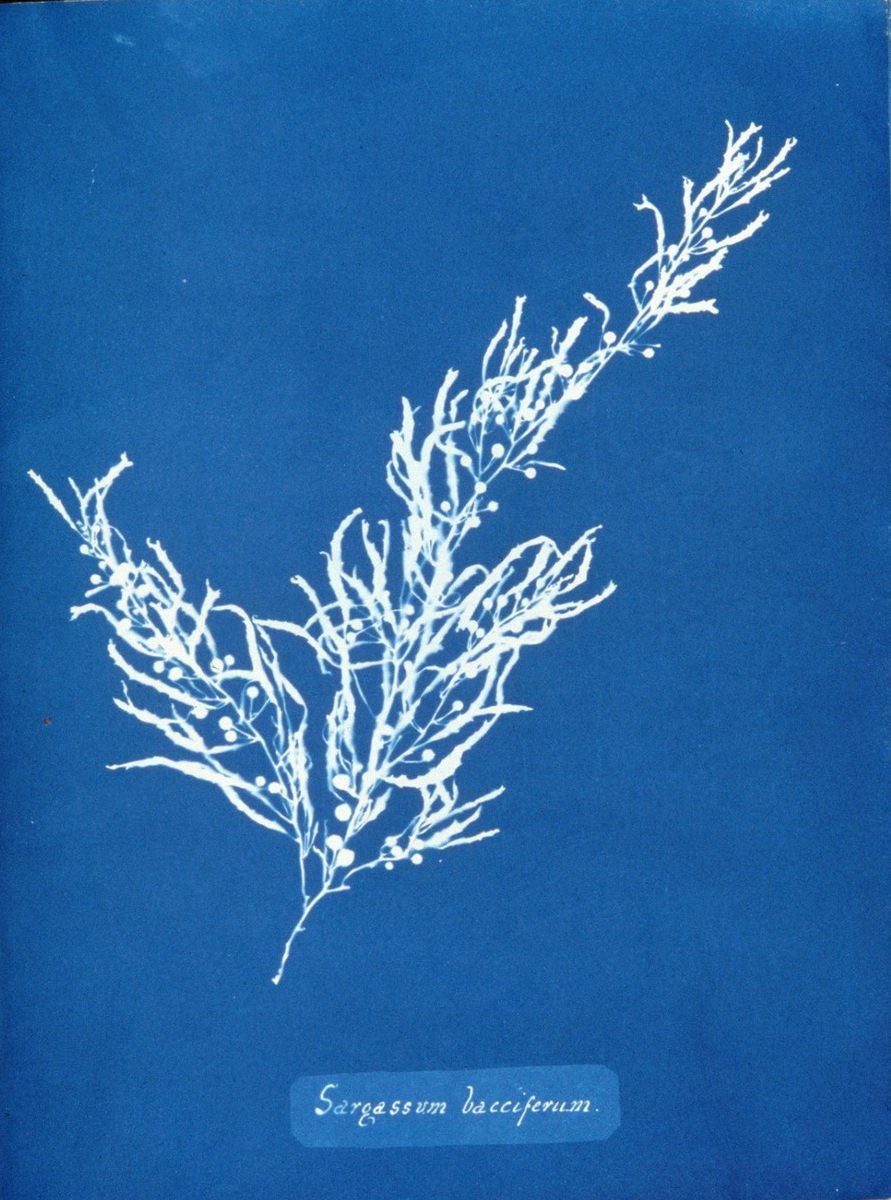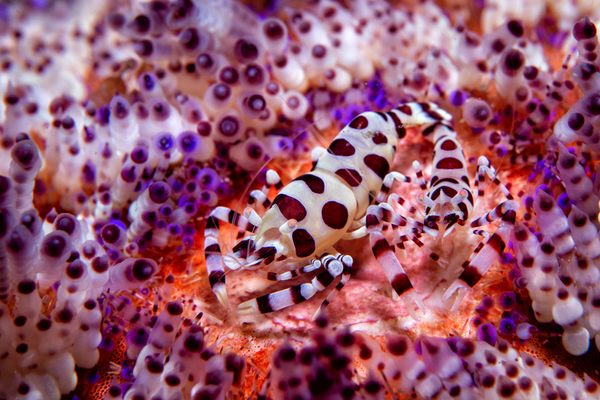These Beautiful Images of Algae Were the First Photos to Illustrate Any Book
From Anna Atkin’s Photographs of British algae: Cyanotype Impressions. (All photos: New York Public Library)
In 1843, botanist Anna Atkins published the first book ever to be illustrated with photographs. Photographs of British Algae: Cyanotype Impressions documented species of algae in ethereal, blue splendor. Its author was as pioneering as the book she published; Atkins is now widely recognized as the first female photographer.
Raised by her scientist father after her mother died, Atkins was uniquely positioned to learn about photographic processes. Through her father’s connections at the Royal Society, she had direct contact with two major figures in early photography: William Henry Fox Talbot and Sir John Herschel.
Talbot had revolutionized photography in the late 1830s with his “photographic drawing” process and later, with the invention of the calotype, which used paper coated in silver iodide to create negatives. In 1842, Herschel invented the cyanotype, which, as the name suggests, produces a cyan-blue print. (This process would later to be widely used to create blueprints).
With knowledge of these methods, and her own scientific background, Atkins set about producing a book to document British algae. By arranging her specimens on coated paper and exposing them to sunlight, Atkins was able to capture, with scientific accuracy, what came to be known as “photograms”.

The titlepage of Photographs of British Algae.
In 1843, just a year after the cyanotype was invented, Atkins self-published the first part of her book. It was not just that the photograms accurately depicted the algae; they were also exquisite looking.
In the introduction, also a cyanotype, she wrote: “The difficulty of making accurate drawings of objects as minute as many of the Algae and Confera, has induced me to avail myself of Sir John Herschel’s beautiful process of Cyanotype, to obtain impressions of the plants themselves, which I have much pleasure in offering to my botanical friends.”
Atkins continued to produce and distribute her work privately until 1853, with a total of 389 photograms of algae, before starting to work with ferns. Today, only 13 known copies remain, one of which is held by the New York Public Library. It is notable for being both one of the most complete copies in existence, and the copy that was owned by Hershel. Drawing from this collection, here is a glimpse of some of Atkins’ miraculous images of algae.

Sargassum bacciferum.

Delesseria sinuosa.

Cystoseira granulata.

Chylocladia parvula.

Ptilota plumosa & capillaris.

Cystoseira fibrosa.

Polysiphonia violacea.












Follow us on Twitter to get the latest on the world's hidden wonders.
Like us on Facebook to get the latest on the world's hidden wonders.
Follow us on Twitter Like us on Facebook